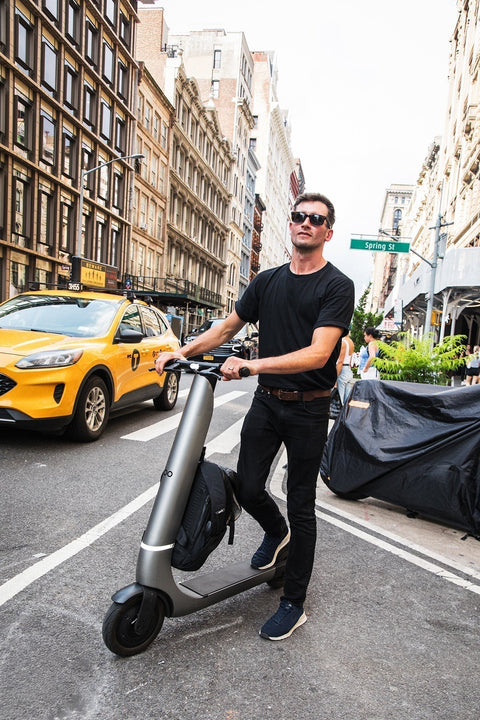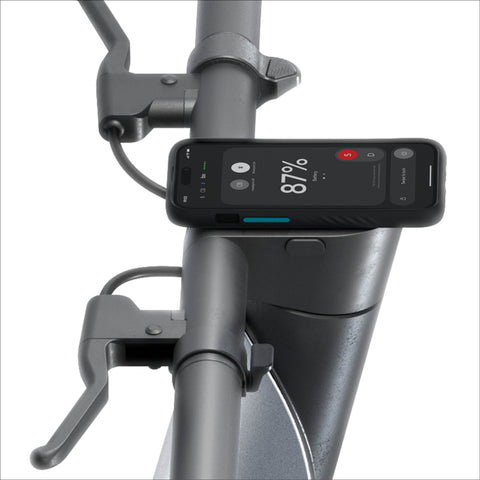Bo Starts at $2k
Oscar Morgan - Bo CEO - August 2025

Building the highest quality product possible
Do you remember the hoverboard craze of 2015/2016? It was a moment that must have had the designers of the original Segway self-stabilising vehicle waking up at 2am in fits of rage.
The original Segway two-wheelers were big road vehicles costing over $3,000, packed with ingenious technology - and a total commercial failure.
The hoverboards of 2015 were essentially the same technology, much reduced in size, and most importantly, with price tags starting at ~$150. Unsurprisingly, they became the must-have electric gadget of the year and the market exploded.
However, it wasn’t only the sales that were exploding. Whereas Segway had a strong brand and took care to ensure the safety of their machines, the hoverboard market was packed with nameless, faceless brands invented by the local sales distributors rather than the factories.
This meant there was no brand reputation to protect, and as a result it created a race to produce the cheapest product possible.
Next thing you know, hoverboards were in the news not for their popularity, but because they had a bad habit of bursting into flames.
This was bad for the owners, and devastating for the hoverboard as a product - with no ‘quality’ brands to buy, most people decided it was not worth the risk of burning their house down to have a little bit of fun floating around.
Which brings us, ten years later, to the e-scooter market of 2025. And imagine how terrifying it is for Bo — as a premium electric scooter manufacturer — to see similar dynamics emerging.
What happened after Segway, Xiaomi, and Electric Scooters got popular
When electric scooters were a new phenomenon, the big names with European and US distribution (think Segway, Xiaomi) contracted dozens of smaller factories to produce their scooters for them.
Effectively these brands became the name and the quality control, but didn't have the immediate hassle of creating their own factories.
As the market matured and electric scooters became more established, these brands began to bring manufacturing in-house. In the process, a huge number of these contracted factories were dropped.
This created a great swathe of ‘dumped’ suppliers who had two choices: either pack in scooters, or start shipping them to customers themselves.
Most went for option two, creating hundreds of tiny brands you can now buy through Amazon, eBay, or via middlemen selling rebadged versions. We’ve seen electric scooters on sale for less than $200.
Naturally, that means people look at the Bo Model M - starting at $2000 - and raise an eyebrow.
Don’t even let’s get started on The $29,500 Turbo. Some have even gone so far as to scream ‘gross profiteering’ at us. However, the accounts don’t lie; with every dollar re-invested into engineering, we have never taken a profit from Bo.

What drives the Bo price
The reality is that we’re just one of the first brands into this market who refuse to ship potentially unsafe scooters.
Before building the Bo M we provided engineering services to ‘value’ electric scooter development in the market. And yes, we engineered the best products possible for a low price.
But to give you some idea of the difference:
When you buy a scooter for $500, the Bill of Materials (factory cost) for that entire product is between ~$160 and $220.
The battery alone on Bo costs more than that.
Why pay more for an electric scooter battery?
So, the important question: Do you really need to spend that much on a battery?
A good analogy is food. Imagine there’s a shop near your house that sells food at half price, but it’s also twice as likely to give you food poisoning. You could take the risk, but most of us would rather just eat something they can trust.
When you spend more money on an electric scooter battery, several good things happen:
- Increased accuracy in manufacturing, reducing the chance of a short-circuit or fire
- Smart monitoring systems that check voltage and temperature while you ride or charge
- Durable metal housing, protecting the pack from punctures and damage
- Full traceability, meaning we can identify the exact production batch of every pack
All of this adds safety, certainty, and longevity. All of that is also before we even talk about range, hill-climb performance, power delivery, or efficiency: the fun stuff.
Now imagine that mindset applied to the entire scooter
Battery aside, what if you took the same care and cost, and applied it to everything?
- The chassis
- The motor
- The lighting
- The wiring
- The buttons
- The brake calibration
- Even the bolts and fasteners
You’d build a scooter that’s tougher in the wild and easier to service.
You’d ride something that feels like a luxury electric scooter, not a plastic toy.
There are Bo articles that go into each of these details. But as an overview, I find this useful in explaining why we can’t compete with Segway, Xiaomi, or even Apollo on price.
You can build cheap. Or you can build safe.
With the important question, “how will this company look after me once I actually own the scooter?”, just look at the recent Segway recalls.
Saving a few bucks on every vehicle sure makes the upfront price attractive… But it also brings a much higher risk of chassis snapping, brakes failing, or batteries cooking themselves.
The biggest e-scooter recall in history? Still belongs to Xiaomi, for broken hinges. Which goes a long way to explaining why Bo Model M doesn’t have one.
So why does Bo cost more?
We’re acutely aware that in a market which runs from $300 to $1500, a product range which starts at $2000+ has sticker shock.
Especially when it comes from a relatively new brand, with a smaller marketing budget.(Spending all our money on engineering better product is, ironically, not a great strategy for telling people we’ve done it.)
But we sleep well at night, because we’re shipping the safest, most durably engineered, and most joyfully rideable scooter we know how to build. We’re not confident many others in the market can say the same.
It simply isn’t of interest for us to squeeze every last cent. We’re on a mission to Enjoy Every Journey - and a little generosity in your ride goes a long way to achieve that.
Other Articles in this Series:
- Bo as the Ultimate Segway Upgrade
- Is Bo Legal in My Country? Full European Scooter Law Guide 2025
-
Why Bo's Ride Feels So Different
What Is This Series About?
This post is part of an article series where we’ll look at how Bo stacks up against some of the most popular electric scooters in the UK and USA. From the Segway Ninebot GMax, to Pure Electric, Navee, Xiaomi, Apollo, and more.
If you’re currently Googling:
- “Best electric scooter UK 2025”
- “Segway GMax vs Bo”
- “Electric scooter with hill power”
- “Alternatives to Segway, Carrera or Haiboy”
- “What’s better than Segway GMax?”
Welcome: you’re in the right place.
Link to Bo Model-M: https://bo.world/pages/bo-m
We’re glad you’re here.


